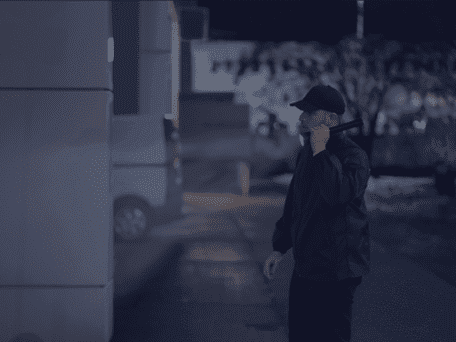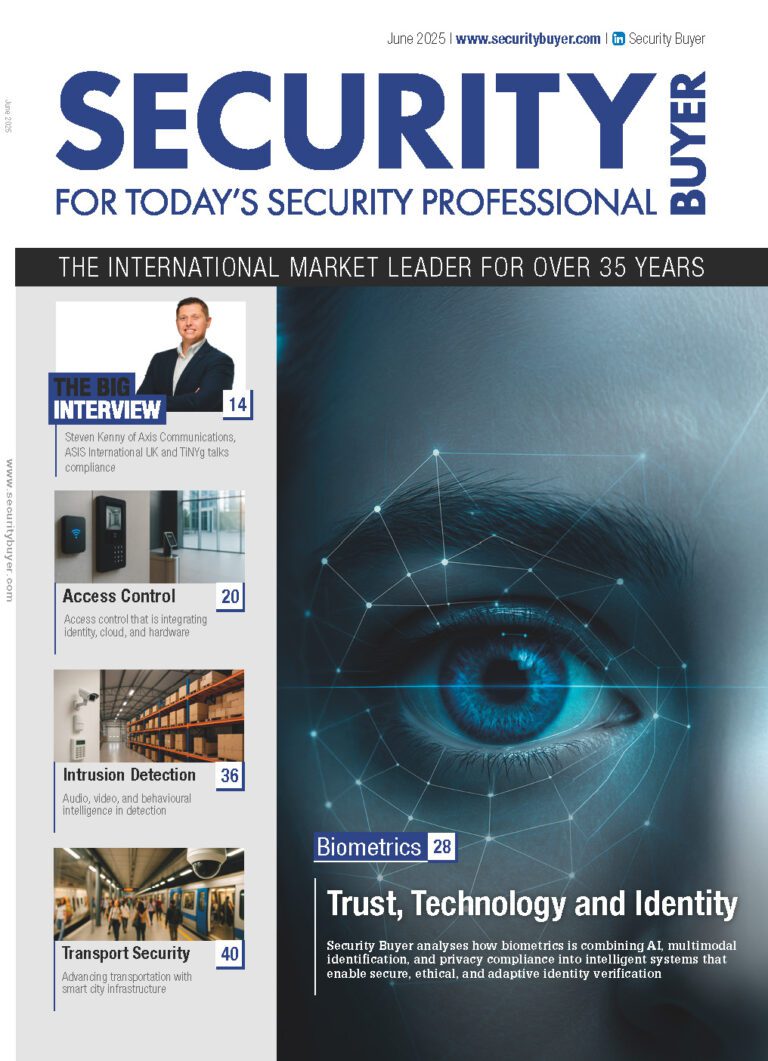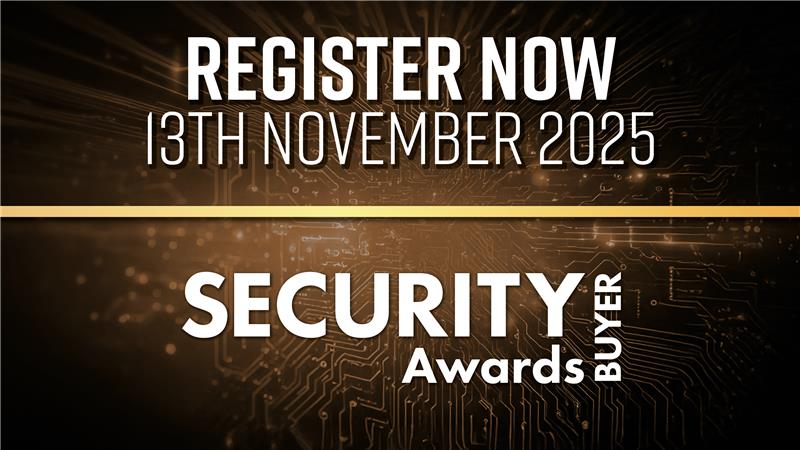
The National Association of Healthcare Security has endorsed a new training course for NHS security officers that was produced by AEGIS Protective Services, run by security training specialist Jim O’Dwyer.
O’Dwyer officially launched the training programme today at the NAHS Conference, being held near Chelsea Football Club in London.
We invited Jim O’Dwyer to write about his new course and the need for specialist training for NHS security staff.
In May 2013, Peter Finch, President of the National Association for Healthcare Security (NAHS) said:

“Without doubt one well-trained security officer is worth two well-intentioned but poorly-trained security officers. Our security officers are our 24/7 eyes and ears on the ground and it is essential that they are appropriately trained and equipped. Unfortunately, it is my view that our healthcare security officers are neither as well trained or equipped as they should be to carry out the increasing demands that are placed on them.”
Recognising the need for improved training, Peter (typically) took positive steps!
The NAHS Executive collaborated, deliberated decided a suitable training specification and then commissioned expert training consultant Jim O’Dwyer of AEGIS Protective Services to produce it.
The result is a comprehensive suite of three training programmes, endorsed by the NAHS.
- Healthcare Security Officer Training
- Healthcare Security Officer ‘Top Up’ Training (for those who are already SIA qualified.)
- Physical Intervention & Restraint Skills
The new training for Healthcare Security Officers has been designed to map to the specification set by the Security Industry Authority (SIA) for Security Guard Licence-linked training and, in addition, incorporates further training that reflects the complexity of the duties and responsibilities of Healthcare Security Officers.
In addition to the training required by the SIA, the new training for Healthcare Security Officers includes:
- Patient Focus
- Communication skills (including Question Technique)
- Healthcare-related legislation
- Lock-down procedures
- Patrolling healthcare sites
- Understanding clinically related challenging behaviour
- Recognising signs of mental ill health and learning difficulties
- Dealing with missing persons and patients
- Safeguarding vulnerable patients
- Procedures for searching people, property and vehicles
- Dealing with prohibited items
- Managing disputes
- Procedures for prisoners attending healthcare sites
- Hand Hygiene
- Dealing with lost and found property
The ‘additional training’ elements more than double the training content of SIA Security Guard Training.
Programme 3 provides essential training on:
- Assault Avoidance
- Protective breakaway and physical intervention skills (holding, escorting & disengagement)
- Physical restraint (on a bed, a trolley and on the floor).
- Safe application of Emergency Restraint Belts (ERBs)
Enabling NHS Trusts to:
- Comply with the latest Guidance from NHS Protect regarding NHS security
- Exceed SIA requirements
- Satisfy HSE expectations
Successful learners receive a personalised Certificate endorsed by the National Association for Healthcare Security confirming their achievement.
AEGIS is delighted to announce the availability of the new training and also that programmes 1 and 2 can be completed entirely online.
In order to perform to their best, people first need to feel safe and secure. This applies to patients as well as staff.
Security Officers working in NHS healthcare services therefore have a vital role to play in ensuring that hospitals are welcoming, safe environments. However, that is just one aspect of their role. Besides the ever present threat of terrorism, they are also responsible for guarding millions of pounds worth of products and resources against loss by theft, fraud, waste and damage.
The larger the hospital, the more complex and diverse the kind of situations they are likely to encounter, with those working in inner city hospitals and mental health facilities facing the biggest challenges. In every case, they really need to have the very best training available.
What is the most important element of the training?
From an organisational risk of liability perspective the most important element is Programme 3 – Physical Intervention & Restraint Skills. This is simply due to the high probability of incidents occurring in healthcare settings which necessitate physical intervention, coupled with the high risks associated with the process.
Whilst, there are no national records to show the number of times physical restraint is employed in acute hospitals, the latest figures for Mental Health settings support the view that it occurs frequently. Figures released 6th June 2013 by mental health charity Mind obtained using Freedom of Information requests, reported there were – at least – 39,883 incidents of physical restraint during the year 2011-12.
A significant proportion (of restraint incidents) involved security staff and police either in isolation or combination.
Added to that, (according to National Patient Safety Data) 126 out of 823 physical restraint incidents across acute healthcare settings during 2009-2012 caused moderate or severe harm and two patients died.
That’s a frightening ratio of about one adverse outcome per every eight restraint incidents.
Inadequate or unsuitable (outdated) training in physical restraint skills obviously increases the risk of an adverse outcome, complaints, allegations, litigation and potentially prosecution.
And, it is not only the organisation and the staff actually involved in an incident that risk prosecution.
Under S. 36/37 of the Health and Safety at Work Act 1974, individuals within an organisation (including directors) can be charged with criminal offences where, through consent, connivance or neglect, they contribute significantly to serious harm occurring and the Health and Safety (Offences) Act 2008, provides for individuals convicted of a breach of section 37 to be jailed for up to two years.
Where serious harm has occurred as a consequence of failure to provide suitable training in physical restraint skills, it can bring a threat of criminal prosecution and jail for individuals responsible for training provision.
Would that be you?
- How often is restraint applied in your hospital?
- Are physical restraint incidents reported, recorded and investigated post incident?
- Are physical restraint incidents being recorded as a Patient Safety Incident?

All private security personnel supplied to NHS trusts must hold a valid SIA licence.
The NHS Security Management Service (NHS SMS) strongly recommends that whether security officers are employed ‘in house’ or contracted in they should undertake training that is equivalent, as a minimum, to the SIA licence linked level 2 training in physical intervention. (This Unit is not part of the Security Guard Qualification and is only taught as part of the Door Supervisor course.)
A consequence of the NHS SMS guidance is that many NHS Trusts have invested in Door Supervisors and Door Supervisor training for their security officers.
It is important to note that:
- The SIA training specification for Security Guards DOES NOT include training in Physical Intervention Skills or Restraint.
- The vast majority of SIA Licence applicants opt to take the Door Supervisor programme because under the SIA’s scheme, it entitles them to work as both a Door Supervisor and as a Security Guard.
- Door Supervisors are NOT TRAINED in how to patrol premises. (Patrolling is a primary aspect of a Healthcare Security Officer role.)
But, even more significant is that, the SIA training that Door Supervisors get in Physical Intervention DOES NOT include training in Horizontal (i.e. Floor) Restraint.
So, NHS Trusts that rely solely on SIA training as a requirement for their security officers are at risk of prosecution in the event of an adverse outcome.
Res Ipsa Loquitor
I am registered as an expert witness in restraint matters.
When asked to report on an adverse outcome involving physical restraint, the first thing that I request to see is the organisation’s policy on restraint and use of force.
The next thing I ask to see is the Health and Safety Risk Assessment, followed by the training records of the staff involved in the incident.
Where the training records stop at SIA Licence-linked training, liability can usually be immediately established – without any of the facts of the incident even needing to be put.
The Latin term for these kinds of situation is ‘Res Ipsa Loquitor’ which means ‘The facts speak for themselves’.
What part of the training is going to help Healthcare Security Officers perform their role better?
This training will help to develop each Healthcare Security Officer’s knowledge base, enable them to make better decisions and improve the overall quality of the service they provide.
However, elements that should make a really big difference to the way they conduct themselves at work include:
- Patient focus
- Understanding clinically related challenging behaviour
- Recognising the signs of mental ill health and learning difficulties.
1. Patient focus
Patient Focus in the NHS is the equivalent of Customer Care in the business world and it is about doing everything possible to make every patient’s experience at the hospital as pleasant, straightforward and un-stressful as possible.
Improving ‘the patient experience’ is at the very core of every NHS Trust strategy. In part, this is because the government has structured NHS funding (i.e. Practiced Based Commissioning) in such a way as to set NHS Trusts in direct competition against each other to deliver healthcare services.
In short, happy patients mean more funding.
It cannot be over-emphasised how important it is for NHS Trusts to ‘win’ the approval of patients for the way they were treated – medically and personally. This includes how safe and secure they felt and how they were treated by individual Security Officers.
Healthcare Security Officers are expected to contribute to the strategic aim:
- Model ideal behaviour at all times
- Intervene as early as possible to prevent escalation of problems
- Always being helpful, polite, courteous and respectful
- Never causing the other person to lose face, or feel demeaned or insulted
- Projecting a positive image of the organisation
- Reporting complaints – so the causes of problems can be eliminated
“Is there anything else I can do for you?” is a question that Security Officers should ask towards the end of each encounter, to underline that they care about the other person’s well-being and are interested and have time to do more for them.
2. Understanding clinically related challenging behaviour
‘Challenging behaviour’ (CB) refers to any non-verbal, verbal or physical behaviour by a patient which makes it difficult to perform clinical tasks and/or poses a safety risk.
Examples of CB include: grabbing; biting; scratching; pinching; poking; hair pulling; punching; hitting; kicking; slapping; self-harming; and inappropriate sexual conduct.
‘Clinically related challenging behaviour’ (CRCB) is challenging behaviour attributable in whole or part to a patient not knowing what they are doing due to clinical factors such as, illness, mental ill health, severe learning disability or treatment administered.
CRCB can arise from dementia, delirium, injury to the head and brain, cancer, substance and alcohol abuse and withdrawal, mental health conditions and learning disabilities.
CRCB may also result from bereavement, anxiety and fear, adverse reactions to medication and treatment, or from an individual feeling threatened, fearful or anxious, suffering delusions or hallucinations, or perhaps in response to a difficult situation, or a misinterpretation of the actions of other people.
CRCB can also be a result of an individual trying to express that they are hungry, thirsty or in pain, or a feeling that staff are not paying attention.
Often, CRCB is a manifestation of a patient’s distress and an attempt by the person to communicate their unmet needs.
Significantly, clinically related challenging behaviour can also be the result of an illness or injury which requires urgent attention and this must not be overlooked.
Clinically related challenging behaviour is a significant problem in the NHS.
For example:
- CRCB may make it difficult for staff to provide appropriate care and can detract from the quality of care and patient experience
- 79% of reported physical assaults against NHS staff in England in 2012-13 were classed as ‘Unintentional’ due to clinical factors. In other words, prosecution would not result in conviction because of the absence of the necessary ‘deliberate intent’ (mens rea).
A ‘Person-Centred Care’ Approach
In 1999, in response to increasing reports of violence (abuse, threats and assaults) towards staff working in the NHS, the Department of Health launched the ‘Zero Tolerance Zone’ Campaign. A principal aim of the Campaign was to make it absolutely clear to the public that violence against NHS staff was unacceptable and the Government and the NHS was committed to stamping it out.
What has been learned since then is that the unique nature of the processes carried out in healthcare settings means incidents of CRCB are going to occur regardless of any threat of criminal conviction and that a ‘’Zero Tolerance’ approach is both impractical and ineffective.
Note: This realisation was reflected in the launch of a new national Campaign by the NHS Security Management Service in 2004, simply titled ‘Tackling violence against NHS Staff’ accompanied by a quiet dismantling of the NHS ‘Zero Tolerance Zone’ Campaign web site.
The new insight has called for a completely different approach to the traditional (i.e. no nonsense tolerated!) security methods of policing and enforcing appropriate standards of behaviour and good order.
The latest approach is termed a ‘person-centred care’ approach. It demands greater tolerance and understanding of CRCB and a primary focus is on minimising any need to physically restrain patients.
Recent guidance from NHS Protect advocates:
Tolerating certain behaviours rather than trying to control them may in some cases be more effective than specific preventive actions.
It is anticipated that, through understanding why a patient may be presenting CRCB, Healthcare Security Officers will be better able to immediately forgive a patient’s challenging behaviour and continue to extend them positive help and support during situations, rather than seeking to physically control them or criminalise them.
Healthcare Security Officers also need to be aware of the need to communicate with the patient in a sensitive way and of how their interaction can positively or negatively reinforce challenging behaviours.
The new training provides advice and guidance on clinically related challenging behaviour that will help Healthcare Security Officers to modify their attitude, approach and decision making appropriately.
3. Recognising the signs of mental ill health and learning difficulties
Statistically, people suffering from mental ill health and/or learning difficulties present an increased risk of aggressive behaviour. This is because going to hospital can be frightening for them. They commonly experience fear, disorientation and anxiety and find themselves unable to express themselves in a normal way.
Certain kinds of behaviour can be associated with an increased likelihood that a patient is experiencing mental ill health or indicate that they have a learning disability.
In some cases, the signs may be obvious (e.g. the person is talking about seeing things or hearing voices which others cannot see or hear). In other cases, the signs are much less obvious (e.g. if someone is clinically depressed or has autism).
Whilst, Healthcare Security Officers are not expected to be able to diagnose specific mental ill health or learning disabilities, it is vitally important that they can recognise signs of a person’s potential vulnerability (i.e. arising from their medical condition) as it will both inform and direct their approach and dealings with the patient.
This is especially true if the person is being treated as a suspect in any criminal investigation, since a failure to recognise the signs may well result in the person being given less than their legal rights and also, consequently, prejudice any prosecution.
The new training programme provides advice and guidance that will help Healthcare Security Officers to be able to recognise signs of mental ill health and learning difficulties and also how to communicate in a sensitive and considerate way.
About Jim O’Dwyer
Jim has an expert knowledge of workplace Health & Safety legislation and violence reduction strategies. He is the proprietor and editor of the Violence at Work (UK) web site and has been registered as an Expert Witness in Workplace Related Violence and Physical Intervention & Restraint matters since 2007.
Jim is no stranger to managing ‘high energy’ conflict and aggression. He served with the Metropolitan Police for 14 years and headed the Central London Pickpocket Squad for five years earning Commendations for bravery and professional ability.
Jim has always been focused on developing the very best training for staff at risk of violence. He is a founder member of the Institute of Conflict Management (ICM), the body that formed to develop national standards for training in the management of workplace violence and aggression.
Jim is a specialist in physical intervention and restraint. His expertise comes from Aikido, a martial art that promotes non-aggression. Jim is a 4th Dan Black Belt and the Chief Instructor at the Bournemouth Aikido Club. His experience enabled him to develop a unique and effective intervention and restraint skills system that is refreshingly different to traditional methods as it does not rely on causing pain or the threat of pain to gain control.
In 1997, Jim set up AEGIS and in 1998, AEGIS became the first organisation in the UK to gain official accreditation from an Awarding Body for a Physical Intervention Skills training course for Security Guards. The programme was Approved & Certificated by SITO, the National Training Organisation for the Security Industry.
In 2010, Jim designed a (QCF Level 2) physical intervention skills training course that was approved by Highfields Awarding Body (HABC) and the Security Industry Authority (SIA) for Door Supervisor Licence-linked training. He also authored the (L3) Train the Trainer course for the programme.
In 2012, Jim was commissioned by the National Association for Healthcare Security (NAHS) to design a complete suite of training for Healthcare Security Officers. The programme is currently in the early stages of roll out.


















